The selection of the right plastic for a specific use is often narrowed down to several well-known choices. Polycarbonate and PETG (Polyethylene Terephthalate Glycol) are two widely preferred alternatives because each has unique characteristics and advantages. This paper provides an extensive analysis of their traits, strong points as well as limitations in order to compare PETG and Polycarbonate in detail. It doesn’t matter whether you belong to the production sector, love doing something yourself or just have interest in materials science, this article will show you which type of plastic might be more suitable for your needs.
Welcome to Pinside: Understanding PETG vs. Polycarbonate
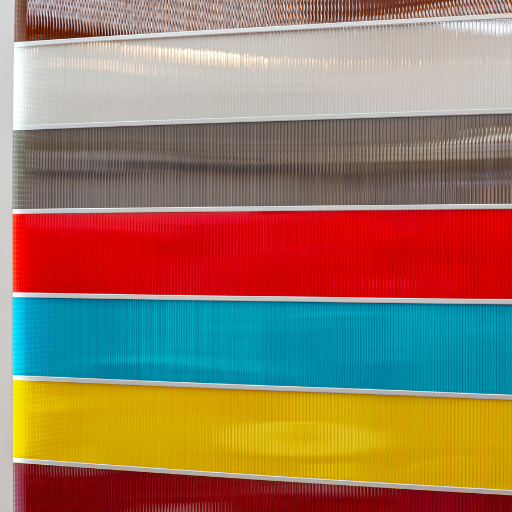
PETG (Polyethylene Terephthalate Glycol)
PETG is a thermoplastic polymer that has become popular due to its versatility, high clarity as well as easy processing. It demonstrates good impact resistance at room temperature and moderate heat resistance thus can be used in various applications such as packaging, medical devices or 3D printing. Among the outstanding features of PETG is its chemical resistance that enables it to withstand exposure to various chemicals without degradation.
Polycarbonate
On the other hand, polycarbonate is a high-performance plastic known for its exceptional impact strength and optical transparency. Unlike PETG, it has greater thermal stability that’s why it can be used in those areas where durability and heat resistance are required including eyewear lenses, bullet-resistant glass windows or electronic parts . Also, polycarbonate is highly toughened yet capable of being both transparent and color-tinted.
Summary
When you choose between Polycarbonate versus PETG consider the particular requirements associated with your application. For instance when looking for materials having good clarity while being easy to mold with nice chemical resistance then I think this factor makes PETG an extremely good choice . Alternatively if one needs material offering unparalleled impact strength alongside ability to withstand extreme temperatures hence Polycarbonate may be considered better than others on the market.
What Are the Key Differences Between Polycarbonate and PETG?
- Impact Resistance:
- Polycarbonate: It offers outstanding impact resistance, and is not easily breakable and is commonly used in heavy duty applications such as bullet proof glass.
- PETG: Like polycarbonate it has good impact resistance but not as tough.
- Heat Resistance:
- Polycarbonate: Temperature wise it can tolerate higher degrees of heat within the range of 257°F to 270°F (125°C to 135°C).
- PETG: Can withstand moderate levels of heat; usually up to about 158°F (70°C).
- Chemical Resistance:
- Polycarbonate: Little chemical resistance. Some chemicals can damage it over time.
- PETG: Has high chemical resistance that makes it more durable when exposed to various forms of chemicals.
- Clarity and Transparency:
- Both materials have excellent optical clarity and can be made transparent, but when transparency is very high, polycarbonate slightly leads ahead.
- Ease of Processing:
- Polycarbonate: Its processing requires higher temperatures due to its higher melting point and viscosity.
- PETG: Much easier to process which makes it suitable for easy molding or extrusion processes.
- Applications:
- Polycarbonate: Mostly found in highly demanding areas requiring strong material performances against temperature effects such as eyewear lenses, automotive components, and electronic enclosures among others.
- PETG: Commonly used where a moderate level of heat resistance and chemical durability are required like in food containers, medical devices, 3D printing among others.
When making a choice between these two materials consider this information alongside technical parameters for your specific needs.
Why Would You Use Polycarbonate over PETG?
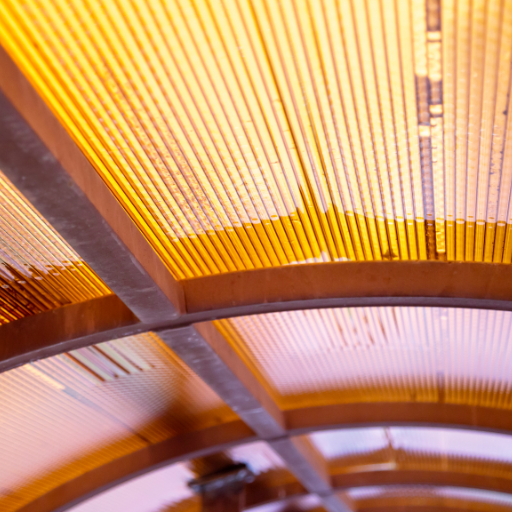
The use of Polycarbonate instead of PETG may be advantageous due to its more excellent impact resistance as well as higher heat stability. For example, it is suitable for applications that require ruggedness and robustness such as safety and security equipment. At the same time, it has optical clarity at high temperatures even in harsh environments. It may also be harder to process, but it usually gives better performance in rigorously testing conditions compensating the extra manufacturing effort. As a result, when increased strength, thermal stability and transparency are required, Polycarbonate is the best material choice over PPETG.
Benefits of using Polycarbonate
- Impact Resistance: Polycarbonate is one of the toughest transparent materials available on the market that resists breaking or cracking under high loads. This makes it a perfect fit for applications like bullet-resistant glazing and riot shields.
- Thermal Stability: Optical clarity and mechanical properties of polycarbonate remain even at elevated temperatures. This makes it perfect for lighting covers used in areas with high temperatures and computer components which often operate under long-time heat exposure.
- Optical Clarity: Polycarbonate transmits light excellently preserving levels of clarity similar to those of glass. This makes it particularly useful where visual acuity is necessary such as eyewear lenses, vehicle headlamps and architectural glazing.
These benefits explain why polycarbonate rather than PETG is chosen for demanding industrial uses. Hence its combination of toughness, thermal resistance and optical purity ensures dependability in demanding conditions over an extended period.
Use Polycarbonate in High-Temperature Environments
Exceptional thermal stability is why polycarbonate is a great choice for high temperatures. It can stand up to 135°C (275°F) without losing its mechanical properties or becoming optically unclear. This makes it suitable for light covers, automotive components and electrical insulation which are exposed to prolonged heat. The structural integrity of these materials at this temperature guarantees that products made from them will last longer and perform better even under difficult conditions. Moreover, when fire resistance is important, polycarbonate’s flame retardant properties make it the best alternative.
Applications of Polycarbonate
Polycarbonate’s many unique features have made it versatile in many industries across the board here are some notable uses:
- Electronics and Electrical Components: In the electronics industry, polycarbonates are used quite often as housings, connectors, switchboards among other components. It has a high impact resistance and thermal stability which makes it ideal for protection of sensitive electronic equipment.
- Automotive Industry: Polycarbonate is employed in the manufacture of headlamp lenses, dashboards and other interior parts in automobiles. The lightweight nature combined with high strength and clarity contributes to enhanced vehicle safety as well as efficiency.
- Construction and Glazing: Due to its excellent light transmittance and durability polycarbonate is popularly used in construction especially architectural glazing, skylights and roofing panels. It offers a long-lasting solution to indoor/outdoor structures because it can withstand harsh weather elements.
- Medical Devices: Various medical devices like surgical instruments, IV components and blood filters use polycarbonates due to their sterilization compatibility and biocompatibility amongst other reasons. Additionally transparency assists during visual monitoring during procedures.
- Optical Media: The optical clarity of polycarbonates makes them useful in manufacturing glasses or lenses as well as CDs (compact disks) or DVDs (digital video disks). Hence they must possess high quality visual transparency so that they provide good visibility in these applications.
Thus their importance in modern industrial and consumer products can be seen in these applications which show how adaptable and reliable polycarbonates are.
How to Choose Between PETG and Polycarbonate for 3D Printing?
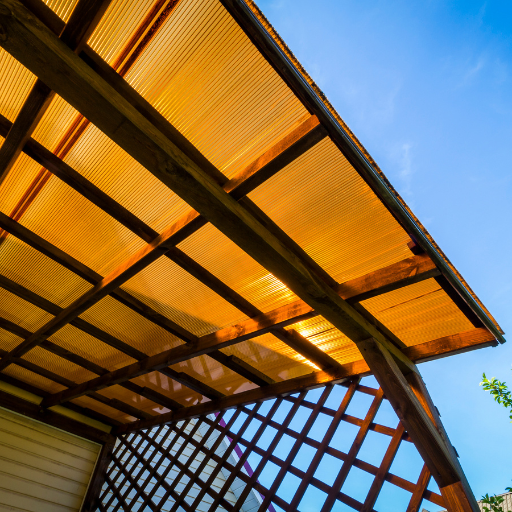
These are some of the things to consider when deciding which material is better for 3D printing between PETG and polycarbonate.
- Strength and Durability: Polycarbonate (PC) is reputed for its enhanced strength and durability in relation to PETG. In case you need materials that can withstand elevated impact and stress levels, then PC may be a better option.
- Temperature Resistance: The heat-resisting capacity of Polycarbonate exceeds that of PETG hence more applicable in high temperature exposure applications although it has higher extruder temperatures required to print it out.
- Ease of Printing: In comparison with polycarbonate, PETG is generally easier to print. It provides good adhesion, lower warping tendencies, as well as does not demand heated chamber thus making it a more accessible option for hobbyists or users with less advanced 3D printers.
- Surface Finish: At times, after being printed directly, the surface finish obtained by using PETG becomes smoother while on the other hand polycarbonate can produce really tough but slightly rough prints that might require further post-processing.
- Cost: While considering budget-sensitive projects, this factor may also affect the decision-making process since usually PETG comes cheaper than polycarbonate.
Finally, choose PETG because it’s easy to use; cost effective and has well-rounded performance or go for polycarbonate if you need high strength; long-lastingness plus resistance against high-temperatures.
3D Printer Filament: PETG vs. Polycarbonate
The appropriateness of either PETG or polycarbonate (PC) filaments is case specific although each one has some advantages.
- Strength and Durability: Polycarbonate, on the other hand, is usually stronger and more durable making it suitable for projects that require materials capable of withstanding high stress and impact. Not as tough as polycarbonate although strong.
- Temperature Resistance: In contrast to PETG which can be printed at lower temperatures, polycarbonate has a hotter extrusion temperature meaning it is difficult to print with this filament for most printers. However the heat resistance for PETG is quite decent.
- Ease of Printing: It sticks well, does not warp easily nor requires heated chamber hence easy to print with in terms of adhesion properties compared to PETG. Those who know how to use polycarbonates choose such as there is a greater level of detail.
- Surface Finish: End-use parts look much better if made out of PETGs since they do not require much post-processing for a smooth finish. Polishing is carried out by many means in order to make PC smoother like its counterpart in this respect.
- Cost: By comparison, however, PETG tend to be cheaper making them a good alternative especially for those concerned about costs. Critical applications call for toughness and durability hence more expensive products like PC.
Therefore, go for an option that guarantees ease of use, budget friendliness and acceptable overall performance –PETG. The best choice will depend on strength requirements, long lasting properties and ability to resist heat- polycarbonate should work here better than any other material.
Impact Strength of 3D Printed Parts
For functional applications, impact strength is a vital factor when checking if 3D printed parts are sound. It is worth noting that polycarbonate (PC) has been recognized as having the best resistance to impact in most cases; thus it’s useful for the elements experiencing mechanical stress and wear. The robust molecular structure of the material maximizes its shock absorption capabilities, surpassing many other 3D printing materials.
PETG (Polyethylene Terephthalate Glycol) also offers commendable impact strength, though slightly lower than polycarbonate. It strikes a balance between flexibility and toughness, which is adequate for a variety of end-use parts. PETG’s ease of printing and good adhesion properties make it a popular choice for projects needing moderate impact resistance without the complexities associated with polycarbonate.
ABS (Acrylonitrile Butadiene Styrene) among others, on the other hand, have average or low impact resistance although ABS does not perform as well as PC or PETG. PLA (Polylactic Acid), while widely used for its ease of use and fine detailing, generally has lower impact strength, rendering it less suitable for high-stress applications.
To sum up, pc still remains unchallenged in durability and strength hence preferred above all for high-impact applications. However PETG may be considered as an easier to use and cheaper alternative since it provides decent performance that can be achieved using simpler print requirements.
Printing Process and Environment Factors
The impact strength of 3D printed parts may be influenced in many ways by the printer process and printing environment. Firstly, the orientation of prints can greatly play a role on its strength with those printed perpendicular to the layers being stronger than parallel ones. Layer height and infill density are also important parameters. The finer layer heights and higher infill densities generally improve the impact strength but this may lead to longer print times.
Printing temperature and nozzle settings must be appropriate for the specified material; incorrect temperatures will cause poor adhesion between layers thus reducing significantly impacting upon the impact strength. For example, polycarbonate printing needs higher temperatures that cannot be achieved on all printers which therefore affects its strength.
Environmental factors such as humidity and temperature also play a role. High humidity levels may affect hygroscopic materials like nylon or polycarbonate causing them to pick up moisture from air resulting in weaker final parts. Controlled environments, enclosures or chambers for printing operations ensure consistent conditions minimizing external factors’ impacts.
In conclusion, optimizing print orientation, layer height, infill density along with maintaining proper environmental conditions significantly helps maximize impact strength in 3D printed parts.
Remaking Playfield Plastics: PETG or Polycarbonate?
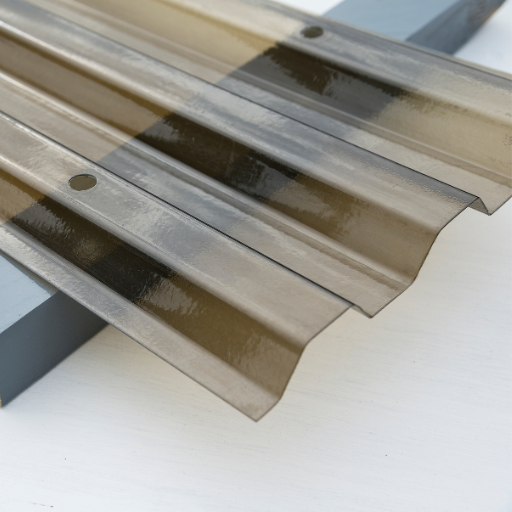
Deciding between PETG and polycarbonate for re-making the playfield plastics necessitates a careful consideration of the pros and cons of each material. PETG is popular among hobbyists and professionals because it is known for its ease of use, good impact resistance, and durability. It prints at lower temperatures that are more accessible to standard 3D printers, and has excellent layer adhesion which discourages delamination. Nevertheless, as compared to polycarbonate, PETG might not be as heat resistant.
On the contrary, with higher temperature tolerance and better strength properties; polycarbonate suits high impact applications or environments that expose materials to high temperatures. Nonetheless, it demands printing in higher temperatures that can make it hard to print because of warping tendencies. A printer able to withstand these high temperatures will produce strong and durable prints with polycarbonate.
In summary, if you want easy printing and good performance overall then choose PETG. In case your printer can handle such temperatures, maximum strength as well as heat resistance are crucial factors while buying objects then go for polycarbonate instead.
Needs for Restoration Questions
In case of playfield plastics rehabilitations, several inquiries must be made to guide your Material selection:
- What material offers the best balance of ease of use and strength? – PETG is generally suggested for those who are looking for an easy print with good impact resistance. It has a low print temperature and excellent layer adhesion, so it works on most 3D printers.
- Which material provides the highest impact strength and heat resistance? – Polycarbonate is known for its high strength and heat resistance which makes it suitable for high impact applications as well as environments with higher temperatures. However, printing polycarbonate requires higher temperatures and more precise printing conditions in order to avoid warping.
- Is printer capability a limiting factor? – Find out if you can achieve the desired print temperature with your printer. PETG will do fine if your printer lacks high-temperature printing capabilities since this material still provides strong performance in many applications.
To put it simply, there are situations where PETG would be favored over polycarbonate or vice versa based on individual requirements and tooling capabilities.
Comparing PETG and Polycarbonate for Remaking
And with regard to PETG and polycarbonate, understanding the strengths and weaknesses of these materials is crucial for successful remaking of playfield plastics.
- User Friendliness: According to current top websites, PETG is preferred for its ease of use. Therefore, it has a lower printing temperature and is more user friendly than other 3D printers on the market. This means it can be used with a wider range of 3D printers because it has lower print temperatures and easier extrusion. PETG tends not to warp as much which makes it less likely that print failures will occur since its layer bonding is very strong.
- Impact Strength and Heat Resistance: In terms of impact strength and heat resistance, polycarbonate comes out ahead as the superior material. It possesses toughness that enables it to withstand high temperatures and severe physical impacts. The internet suggests using this material in environments where durability and heat resistance are paramount.
- Printer Capability: Standard 3D printers can handle the lower printing temperatures needed by PETG (around 230-250°C). In contrast, polycarbonate requires much higher printing temperatures (around 270-310°C) as well as a heated print bed thereby limiting its use only to high-performance 3D printers capable of keeping these conditions without excessive warping.
To sum up choose PETG if you are looking for an easy printable material with good performance within mild conditions. For extreme strength and thermal stability go for polycarbonate material ensuring everything fits your printer specifications.
Long-Term Durability of Polycarbonate and PETG Playfield Plastics
Several important points about the durability of polycarbonate and PETG playfield plastics in the long term can be learned. Polycarbonate is most often prized for its excellent toughness and resistance to UV rays as well as high temperatures with time. In addition, this material has a very low scratch and impact resistance making it good for areas where sustainability is a crucial aspect to determine which one between PETG or polycarbonate should be used. On the other hand PETG also has reasonable durability especially in terms of UV resistance and moderate temperature stability. Nevertheless, it is relatively weak to physical impacts when compared to polycarbonate. It therefore means that both materials are able to deliver high performance over long periods; however, polycarbonate emerges as stronger than PETG for applications that require more strenuous conditions.
Polycarbonate vs. PETG for Laser Cutting and CNC Machining
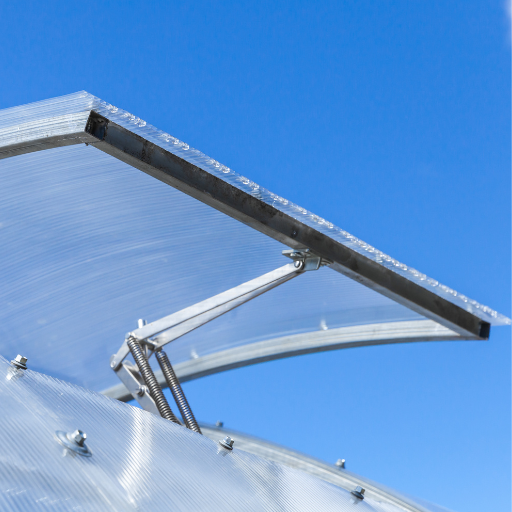
The most significant differences between polycarbonate and PETG for laser cutting and CNC machining are their material properties and machinability. The strength of this plastic makes it perfect for projects that require high durability. However, due to its higher melting point, cutting or engraving with a laser can be difficult on polycarbonates resulting into bigger heat-affected zones. While the latter necessitates caution during the process because there may be cracks or chips.
On the contrary, lower melting point allows easier laser cutting of PETG thus producing smooth edges devoid of thermal distortions. Even though not so strong like other types of materials, CNC machines still work effectively well using this plastic since it does not break easily while being manipulated by such tools since they are known to have some flexibility with regards to different positions taken up by them during operation . During laser cuttings it doesn’t get hot too fast thus becoming an easy choice if you need clean lines with no smoke marks whenever accurate details are required (such as intricate logos). Thus if simplicity in cutting together with machining but with reasonable life expectancy is considered then PETG may be the best material for such applications. In addition, polycarbonate is still a better choice when it comes to projects that need maximum strength and sustainability even at the expense of extra carefulness during the process of machining.
Laser Cut Precision with Polycarbonate and PETG
The precision of laser cuts made on polycarbonate and PETG plastic sheets is, to a large extent, determined by their dissimilar physical properties. Polycarbonate has high strength and impact resistance, but it has a higher melting temperature hence heat affected zones may develop leading to warping and imprecise cutting. On the other hand, PETG’s low melting point allows for smooth cuts with minimal thermal distortion making it more appropriate for delicate laser cut out jobs. Websites such as Make Magazine and Trotec Laser argue that while polycarbonate can be difficult because of its susceptibility to burning and breaking when exposed to the laser beam, PETG’s machinability gives way to cleaner edges and improved resolution in details. Eventually, PETG is commonly recommended for intricate laser cutting operations that have high precision requirements due to its durability versus ease of cut trade-off.
Machinability and CNC Performance
When it comes to machining and CNC performance, both polycarbonate and PETG have their own unique pluses. Polycarbonate is a tough material that can withstand large amounts of stress and has high impact resistance enabling its usage in heavy duty applications. Though it’s good at machining, there is a need to avoid generating so much heat that could induce the development of cracks due to the stress. Polycarbonates are usually recommended by manufacturers of CNC routers for use with sharp carbide tools and lower feeds.
On the contrary, PETG is preferred because it is easy to machine; hence less resistance and reduced edge chipping. Compared to polycarbonate, PETG has a lower melting point which reduces the possibility of thermal damage during CNC operations. Some websites like CNC CookBook, Plastics Distributor and Fabricator Magazine or Trokut do specifically mention this type as being easier machined with cleaner finishes and less tool wear. Therefore, in projects requiring fine details and smoother surfaces in CNC machining applications, PETG is often regarded as more user-friendly than other materials.
Heat Resistance during Cutting and Machining
Cutting and machining heat resistance distinguishes between polycarbonate and PETG. Polycarbonate has a higher heat resistance compared to PETG, capable of withstanding temperatures up to 135°C (275°F) before deforming. This makes it suitable for applications that involve high operating temperatures. However, due to its higher heat sensitivity during machining, it is essential to manage heat build-up to avoid stress cracking and deformation. Utilizing proper cooling techniques and appropriate tool settings can mitigate these risks.
PETG is generally easier to work with under heat-intensive machining processes even though it has lower thermal thresholds of about 80°C (176°F). It chokes when placed in such environments as its edge chipping risk diminishes and the probability for thermal damage goes down; as a result, many CNC projects prefer this over other materials. Burn chances are reduced because of low softening point on this material meaning the cuts will remain cleaner throughout. PETG does not accumulate much heat therefore operations are smoother requiring less strict cooling procedures. Websites like CNC CookBook, Plastics Distributor and Fabricator Magazine, Trokut have all noted that PETG excels at maintaining quality under different temperature conditions hence use it on those projects where one might worry about heat management issues.
Frequently Asked Questions (FAQs)
Q: What are the key differences between PETG and Polycarbonate?
A: PETG (Polyethylene Terephthalate Glycol) and Polycarbonate (PC) differ in terms of strength, heat resistance, and ease of printing. PETG is generally easier to print with and more flexible, while Polycarbonate, known to be “stronger than glass,” offers higher strength and better heat resistance but requires higher temperatures during printing.
Q: Which material is more suitable for 3D printing, PETG or Polycarbonate?
A: PETG is also better suited for general 3D printing due to its ease of use, making it a preferred choice for most users. Polycarbonate, on the other hand, is excellent for applications needing higher strength and heat resistance but requires a more optimized printing environment to prevent warping and ensure good print quality.
Q: Are there specific applications where Polycarbonate stands out over PETG?
A: Yes, Polycarbonate stands out in applications needing exceptional strength and heat resistance, such as engineering plastics in automotive or aerospace sectors. PC is also preferred for making safety equipment like helmets and bullet-proof glass. It can also vac mold Polycarbonate parts due to its excellent durability.
Q: How does PETG compare to other plastics like acrylic or PVC?
A: PETG offers better durability and flexibility compared to acrylic, making it less prone to cracking. While PVC is tougher and good for plastics used in construction, PETG is more user-friendly for 3D printing tasks. Both materials are used differently depending on the application requirements.
Q: What are the environmental considerations when printing with PETG or Polycarbonate?
A: Both materials require a controlled printing environment to prevent warping and achieve high-quality prints. PETG is easier to work with in less optimized settings, while Polycarbonate requires high temperatures and a stable environment to prevent issues during printing.
Q: Is PETG or Polycarbonate clearer as a material?
A: Both PETG and Polycarbonate are clear materials, making them suitable for applications requiring transparency. However, Polycarbonate tends to be clearer and maintains its transparency better under higher stress than PETG.
Q: How do PETG and Polycarbonate perform under heat?
A: Polycarbonate performs significantly better under heat, maintaining structural integrity at higher temperatures. PETG, while also heat-resistant, does not match the high-temperature resilience of Polycarbonate.
Q: Can PETG or Polycarbonate be used for making toys or playfield parts like the upper playfield on wpt?
A: Yes, both materials can be used to make playfield parts. PETG is easier to print and manipulate for such applications, while Polycarbonate offers greater durability and strength, ensuring the parts last longer under mechanical stress.
Q: How do PETG and Polycarbonate compare in terms of safety?
A: Polycarbonate is considered safer for high-impact applications due to its strength and resistance to shattering, making it suitable for safety equipment. PETG is also safe but is more suitable for everyday items and less critical applications.
Q: Are there any notable brands or references for PETG and Polycarbonate?
A: Lexan is a well-known brand for Polycarbonate, known for its high-quality and reliable PC is also widely used in various applications. PETG has also been gaining popularity, with many 3D printing enthusiasts sharing their experiences on sites like pinside.com.









